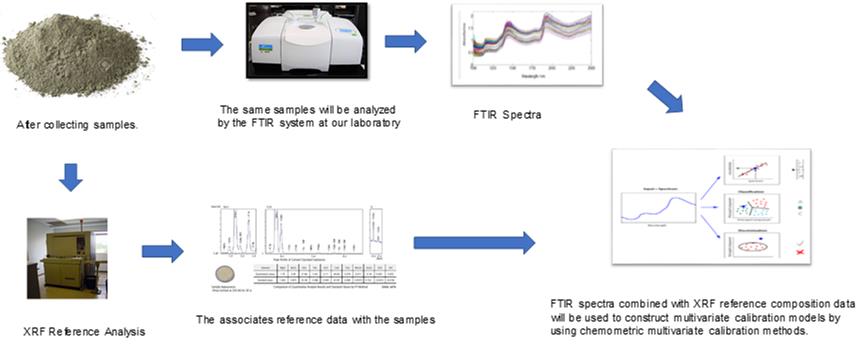JOURNAL 2601
Journal of Chemical Metrology
Year: 2022 Issue: 2 July-December
p.78 - 89
Viewed 2503 times.
GRAPHICAL ABSTRACT

ABSTRACT
IIn combination with a multivariate calibration method, FTIR-ATR spectroscopy was presented as a rapid method for the determination of some major oxides (CaO, SiO2, Al2O3, Fe2O3) and minor oxides (MgO, SO4, Na2O, and K2O) in diverse materials (raw material, raw meal, additives, clinker, and types of cement) in cement manufacturing. The FTIR spectroscopy based multivariate models were generated by taking X-ray fluorescence (XRF) as a reference method. Among a number of spectral preprocessing methods, extended multiplicative scatter correction (EMSC) yielded the best PLS models. The standard error of prediction (SEP) for the optimal FTIR based PLS models ranged from 0.10 to 2.07 (w/w%), and the regression coefficient (R2) ranged from 0.95 to 0.99 for PLS predicted vs XRF reference plots. Statistical evaluation of the both methods was carried out by paired t-test at the 95% confidence level and the results showed that the FTIR-ATR combined with PLS model results are consistent with the XRF reference measurements for all the oxides studied. Compared to the XRF method, which can take anywhere from a few minutes to an hour for each measurement, the proposed method is faster, cheaper, and safer. The presented technology also allows rapid monitoring of a cement factory production line.
KEYWORDS- Cement composition
- PLS
- oxide determination
- FTIR
- XRF